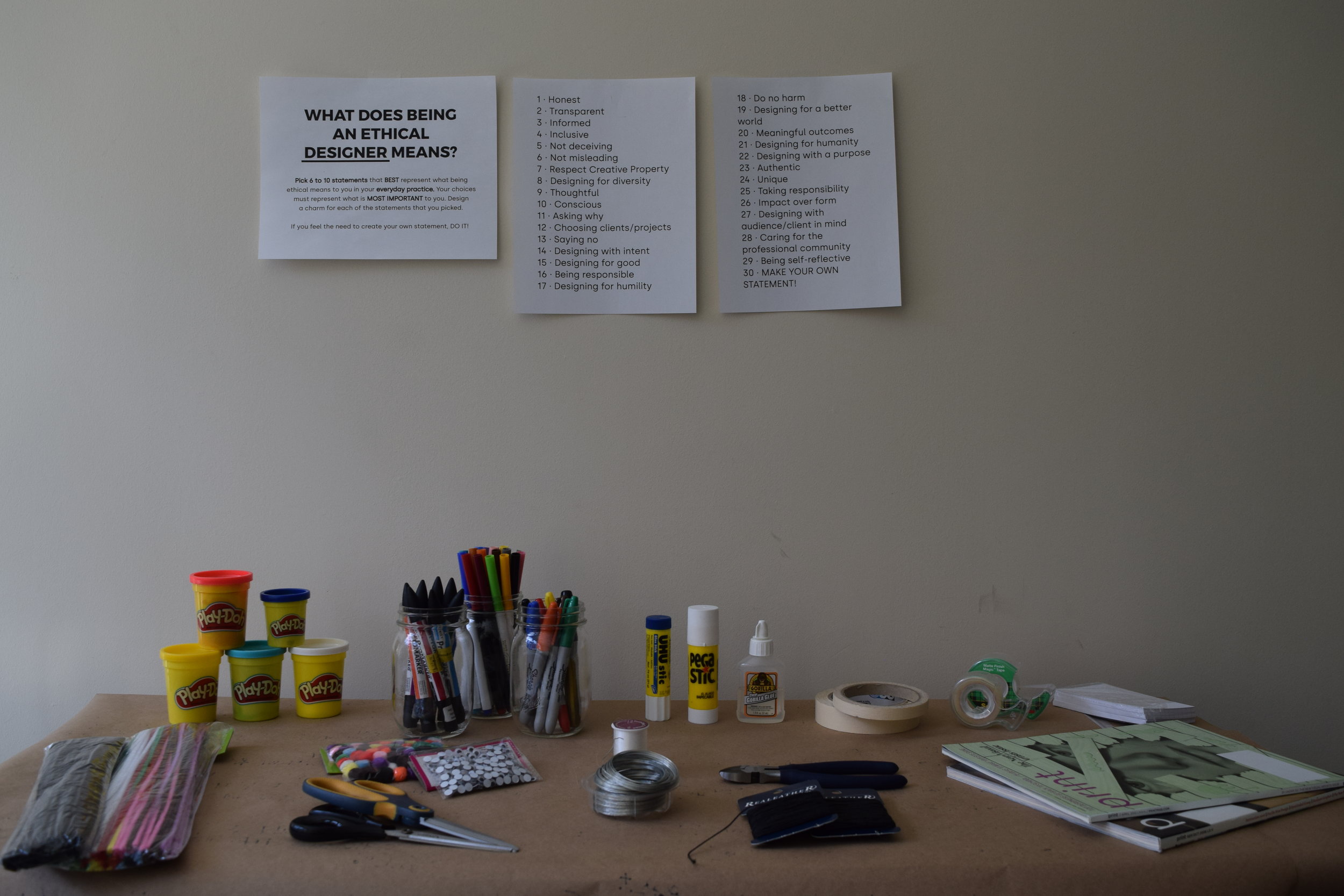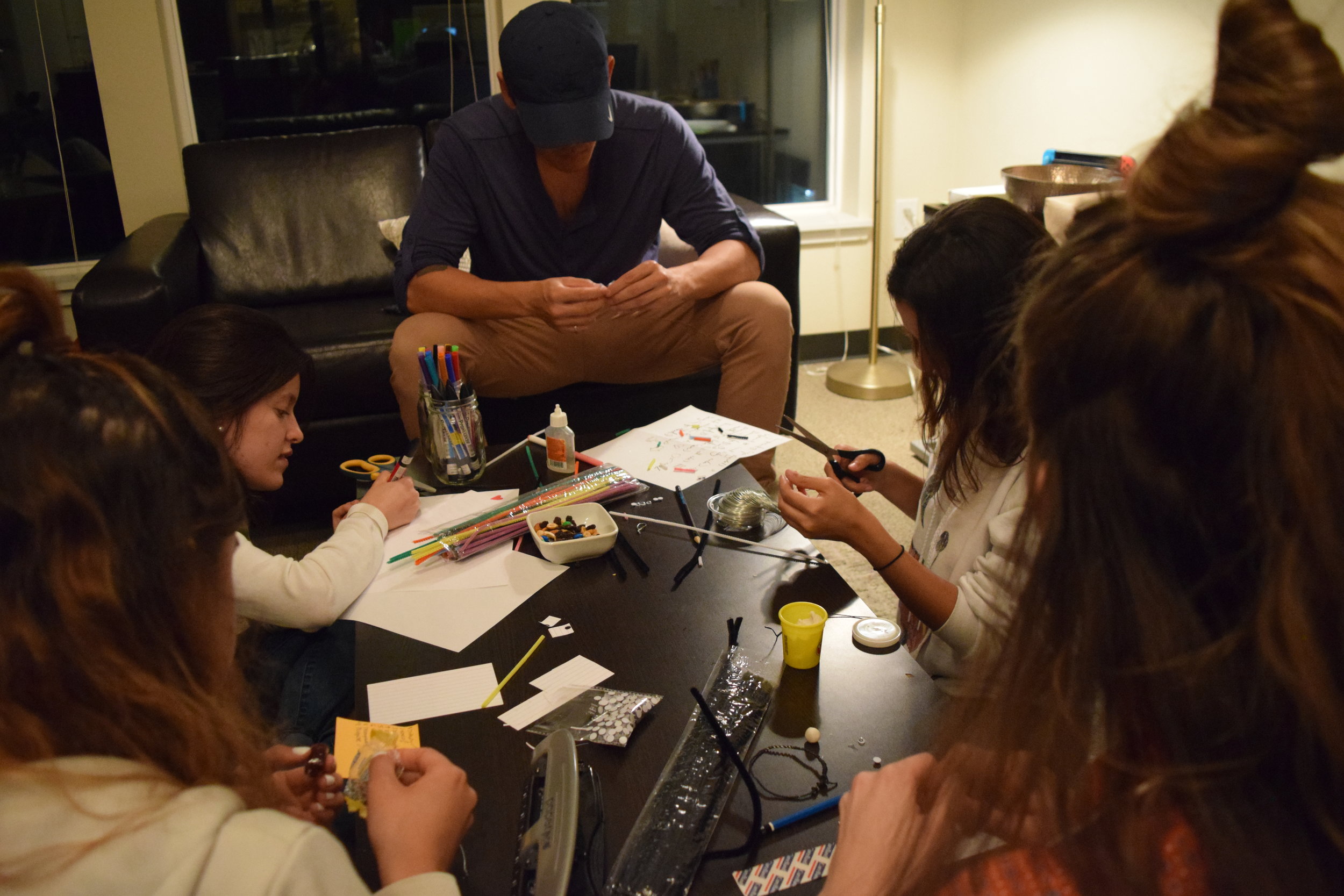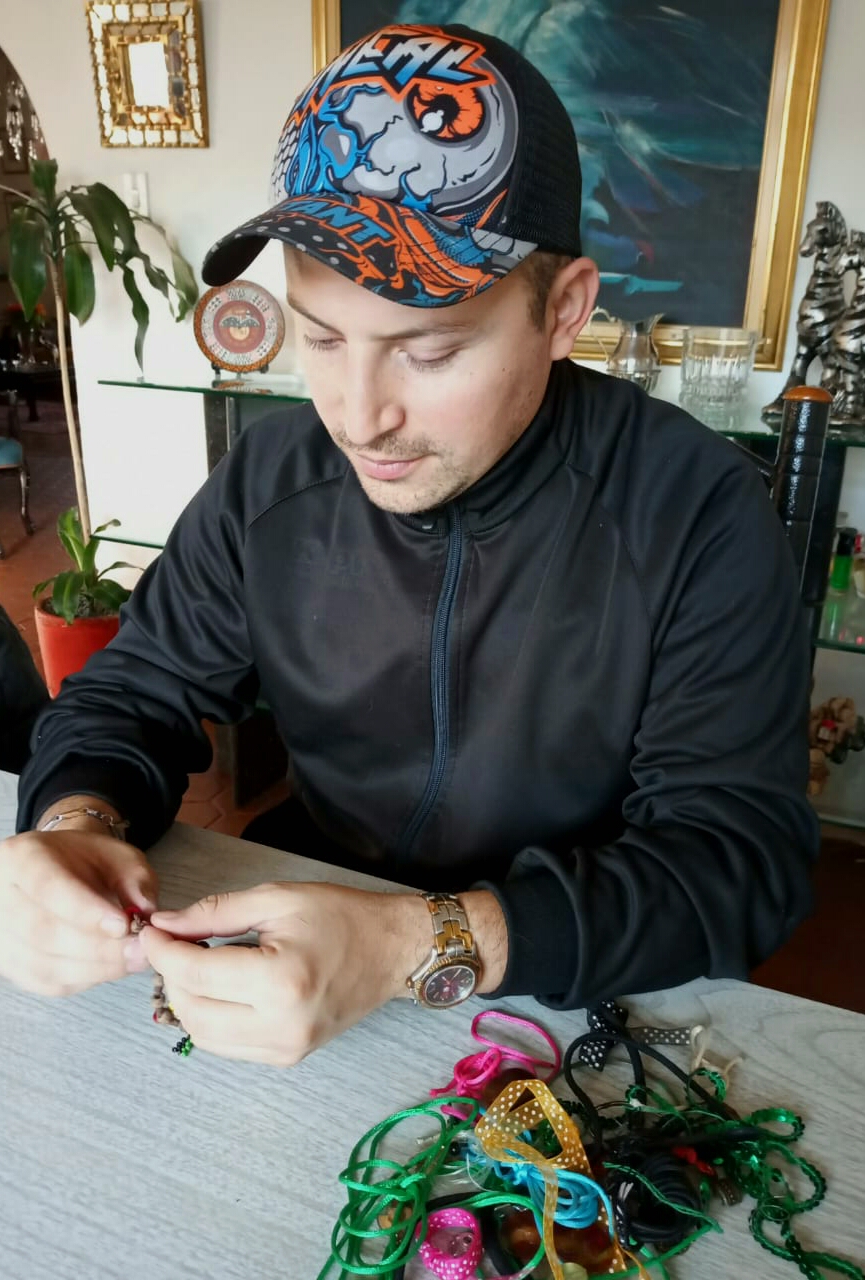Impact over form
M.F.A. Graphic Design Visual Experience Thesis
at the Savannah College of Art and Design
Published in Information Design for the Common Good
Chapter 2: Social Good & Empathy
Courtney Marchese. Bloomsbury Publishing, September 2021
Awarded top 2 outstanding Graduate thesis
Graphic Design Department
Savannah College of Art and Design. May, 2019
The purpose of this thesis was to explore ways in which the Design
discipline could be redeemed by pushing for a more ethical practice.
I believe we hold in our hands the power and capability to, as Herbert Simon stated, transform existing situations into preferred ones. I believe that designers hold in their hands a great power and responsibility that has not been fully explained to them. We are being taught how to design but not how to be a designer.
I was fortunate enough to be exposed to a design education that invited me to be multidisciplinary. I owe to my professors at Los Andes University the idea that looped around my head for years and then found its way as my master’s thesis at the Savannah College of Art and Design. My thesis is a push for a more ethical application of design, a push for a new way of understanding our role and capabilities as designers. This is my aim to contribute to the discipline I’m part of, and the beginning of a project that I want to expand and share with the world.
This thesis is divided in two complementary outcomes: a written document and a visual outcome. For the visual outcome I designed a data visualization experience: an installation made of 33 transparent sheets that featured each of the participant’s shapes. The shapes were hung from the ceiling in order to allow the viewer to walk around them. The installation was complemented with additional graphs that showed the possibilities behind the data by dividing it into categories: gender, ages, and deeper levels of the ethical statements. One of the most popular statements was “Designing for good” and in order to map out what this meant to the participants, an additional visualization was designed.
The purpose of this thesis was to explore ways in which the Design discipline could be redeemed by pushing for a more ethical practice. The data collected through the process is an opportunity to keep growing the discipline’s understanding of what ethics are and how they can be weaved into the core of design curriculums. This thesis is the first prototype for a new movement of designers, designers that believe in the impact of their work as a much more powerful force for good, rather than just the creation of beauty.
Abstract
Everything that humanity encounters is designed, which means designers bear a huge responsibility. Designers have, in their hands, a power that they have not been taught how to use, and more importantly, how not to use. This power is being passed to them without any concern on how they might use it and under what ethical and moral standards it is to be used.
This thesis aims to demonstrate that there is a need for a transformation in design education. Academia has been perpetuating the designer’s ignorance by turning design schools into the clearinghouse for a non-ethical design practice. Designers are not being taught the foundations of ethical behavior as part of their curriculum to uphold an ethical standard.
The findings from this research will argue for the introduction of an ethical baseline at the core of design education. Designers should not only talk about ethics but act on them in order to address the complex problems society faces.
Anchor Words
.
Intent
Sustainability
Field theory
Action Research
Ethics in design
Power and design
Ethical commitment
Ethical baseline
Design for good
Methodology
In order to design the data visualization exhibition I collected data from designers as well as practitioners from other disciplines, including artists, engineers, and business administrators, about what areas of ethics they thought were most important. Participants were invited to interact with a reflective process by choosing topics and creating bracelets. The bracelet activity sparked conversations among the participants and their priorities in ethics.
The choices made by participants were then visualized as unique shapes that were screen-printed in translucent pieces. Viewers walked through these data creations for an immersive and interactive experience. The main translucent pieces were complemented with posters that showcased the abstract, some of the bracelets designed by the participants, all the unique shapes compiled, and a comparison of the data sets collected.
Workshop #1 · Savannah, GA
Workshop #3 · Bogotá, Colombia
Screen-printing prototyping
A4 size prototype with transparent sheets printed
Preparing files to burn printing frames & creating translucent colors
Prototyping printed registration
The exhibition took place on May 24, 2019 at Welmont Venues, Savannah, GA.
The space included the screen-printed pieces as the focal point of the display and the posters next to it as a way to guide and complement the experience. That same day the defense of the thesis took place as well as the inauguration of other five exhibits by fellow classmates.
The Exhibition
Main data visualization piece: each hanging piece was screen-printed
and represents a participant in the research process
Thesis Committee: Paula Kreissler, Joseph DiGioia (Chair), and Scott Boylston
Complementary Posters:
Comparison between ages in relation to Ethical stands and perception of what Ethics are.
These pieces respond to how each age experienced a completely different Ethical education.
Written document
To read my full thesis document submitted to the Savannah College of Art and Design
click the link. If you have any feedback or would like to start a conversation about it,
do not hesitate to message me!
·
Exhibition photos by Veronica Ibrahim
Process photos by the author






































